

My wife brought in a half dozen caterpillars from the garden. She found them all on the carrots and dill plants. We identified them as black swallowtail caterpillars. She thought there were five but another egg must have been on the leaves as we ended up with six!
Black swallowtails are found all over southern Canada and most eastern and mid-western states. Females are typically larger than males and they have different coloring (called dimorphism). They are quite small as eggs which are pale yellow when laid but turn dark as the caterpillars is about to hatch. Egg development generally lasts 4 - 9 days. The caterpillars go through several stages (called instars) rapidly over 10 - 30 days. The pupal stage is usually 9 - 18 days except for batches which overwinter. These late born caterpillars stay in their chrysalis until spring. There are five instars. The first three, the caterpillars are black with a white stripe, called a saddle, across the middle. This is often referred to as the "bird dropping" stages as they look like bird poop. Most of ours started at a middle stage (fourth instar or so) which is black and white with yellow stripes, or green with black and yellow bands.
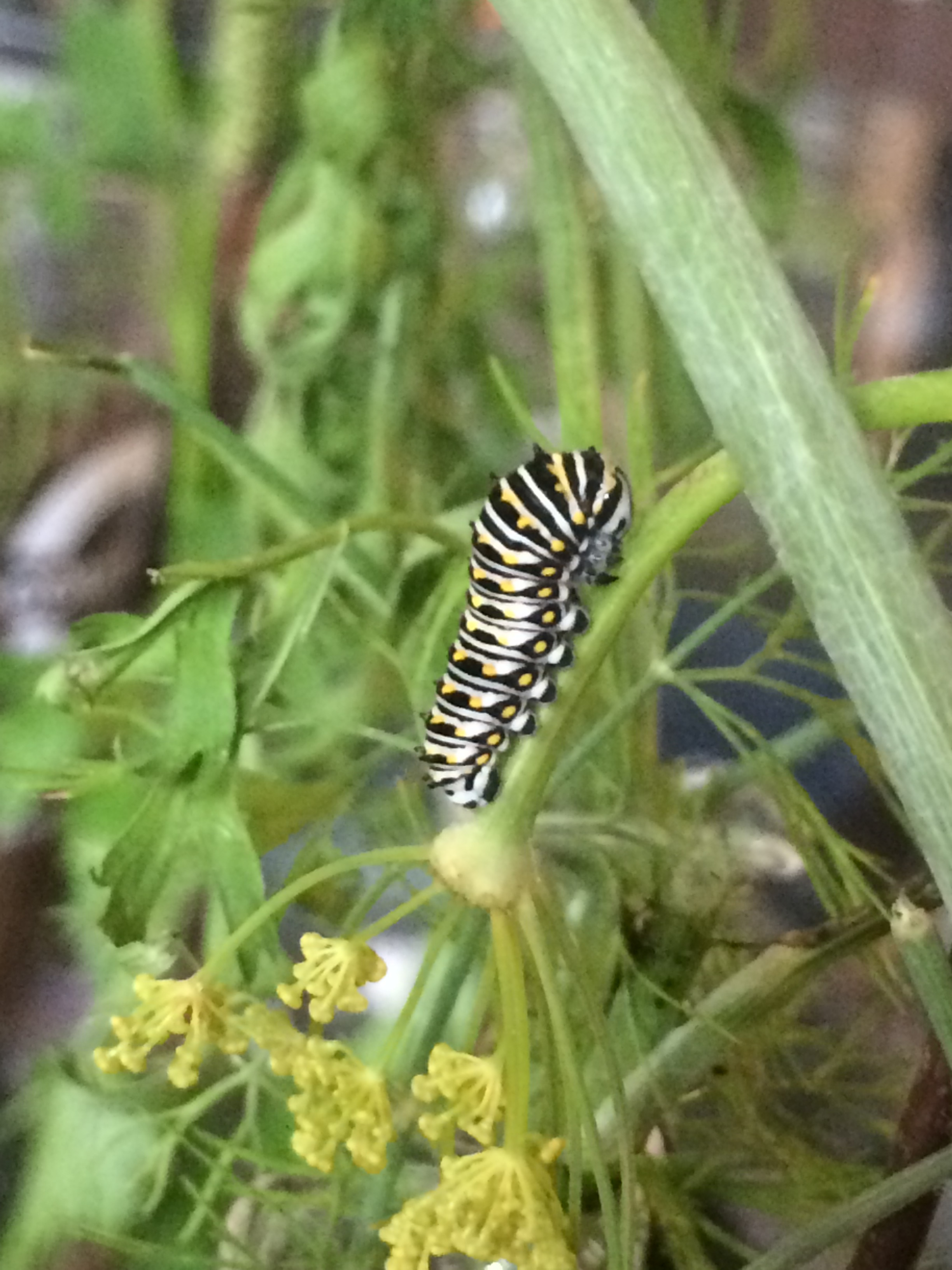
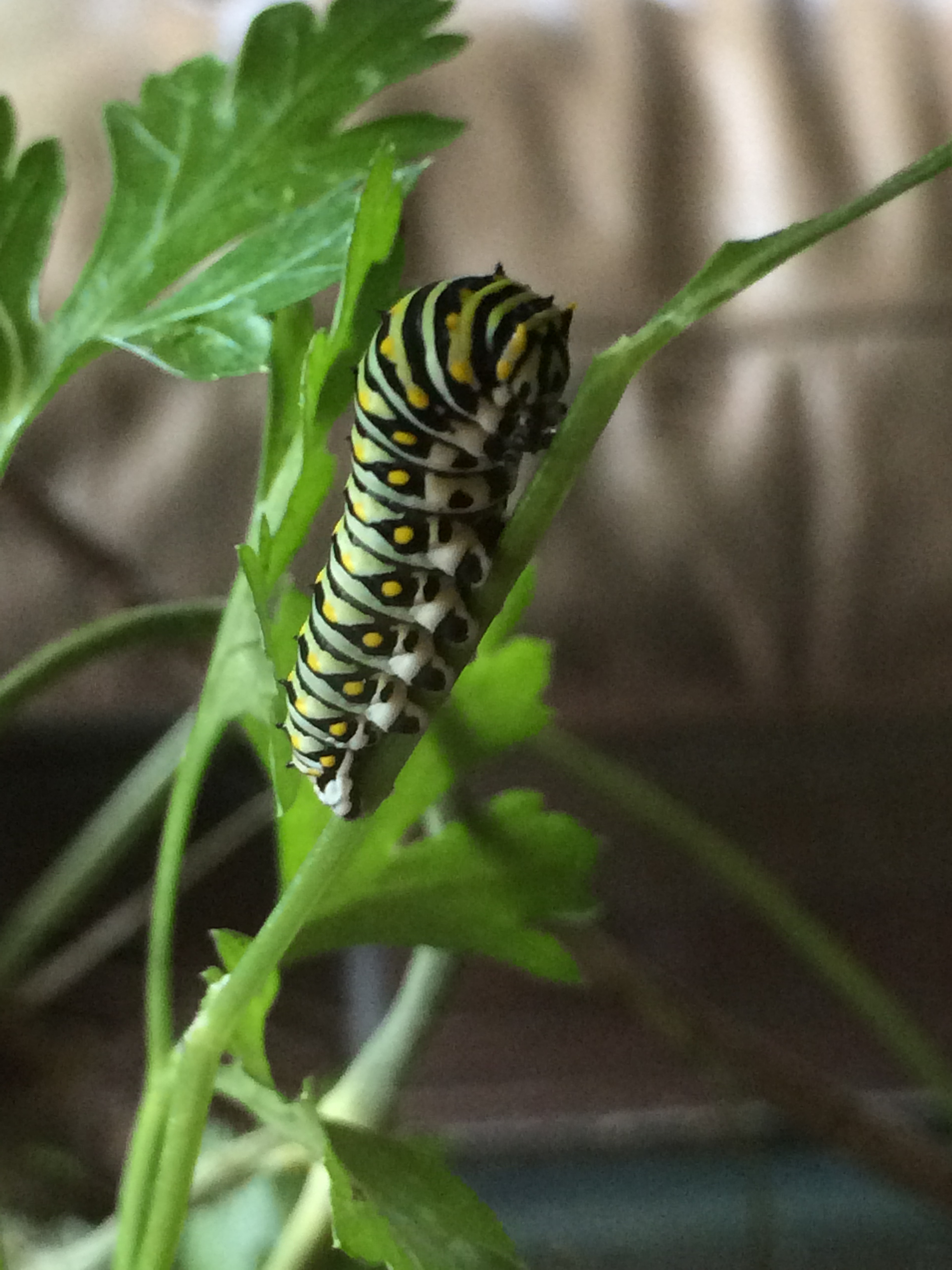
These stages are defined by vigorous eating and resting. They are fast and dedicated eaters, systematically starting at one side of a leaf then devouring it each prong in turn. Then the stem is eaten. Whole plants will be consumed this way down to the stalks.
The little one started at an earlier instar. It was easy for it to hide. During these black instar stages, the white band is more noticeable as it grows. They also appear more spiky. From egg to pupae, it is shocking the size difference over time.
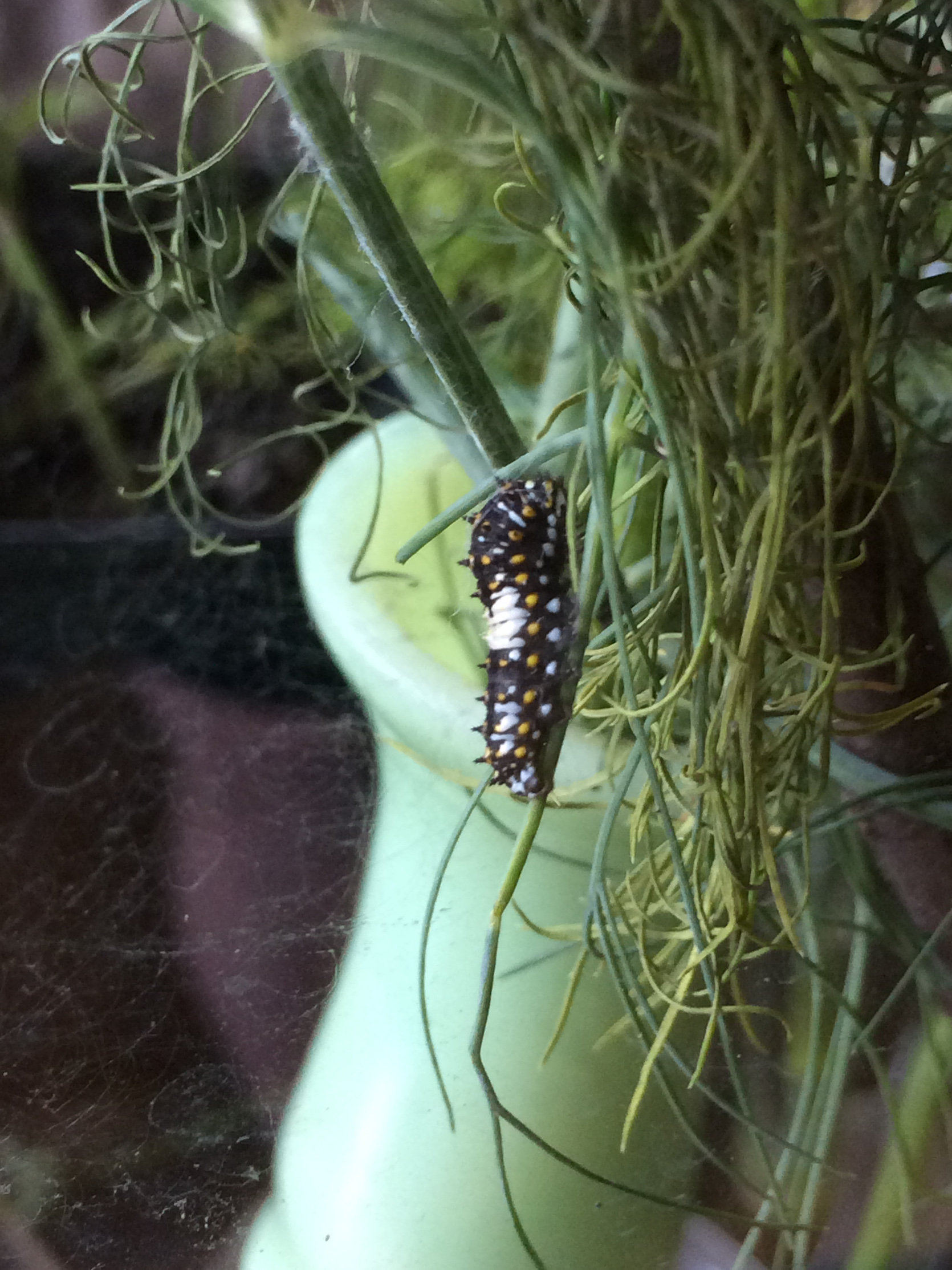
Here you can see the skin almost all the way shed. They start from the head and work it off to the rear. Then they will turn around and eat the old skin. This happens every stage except when they shed their skin to enter the chrysalis.
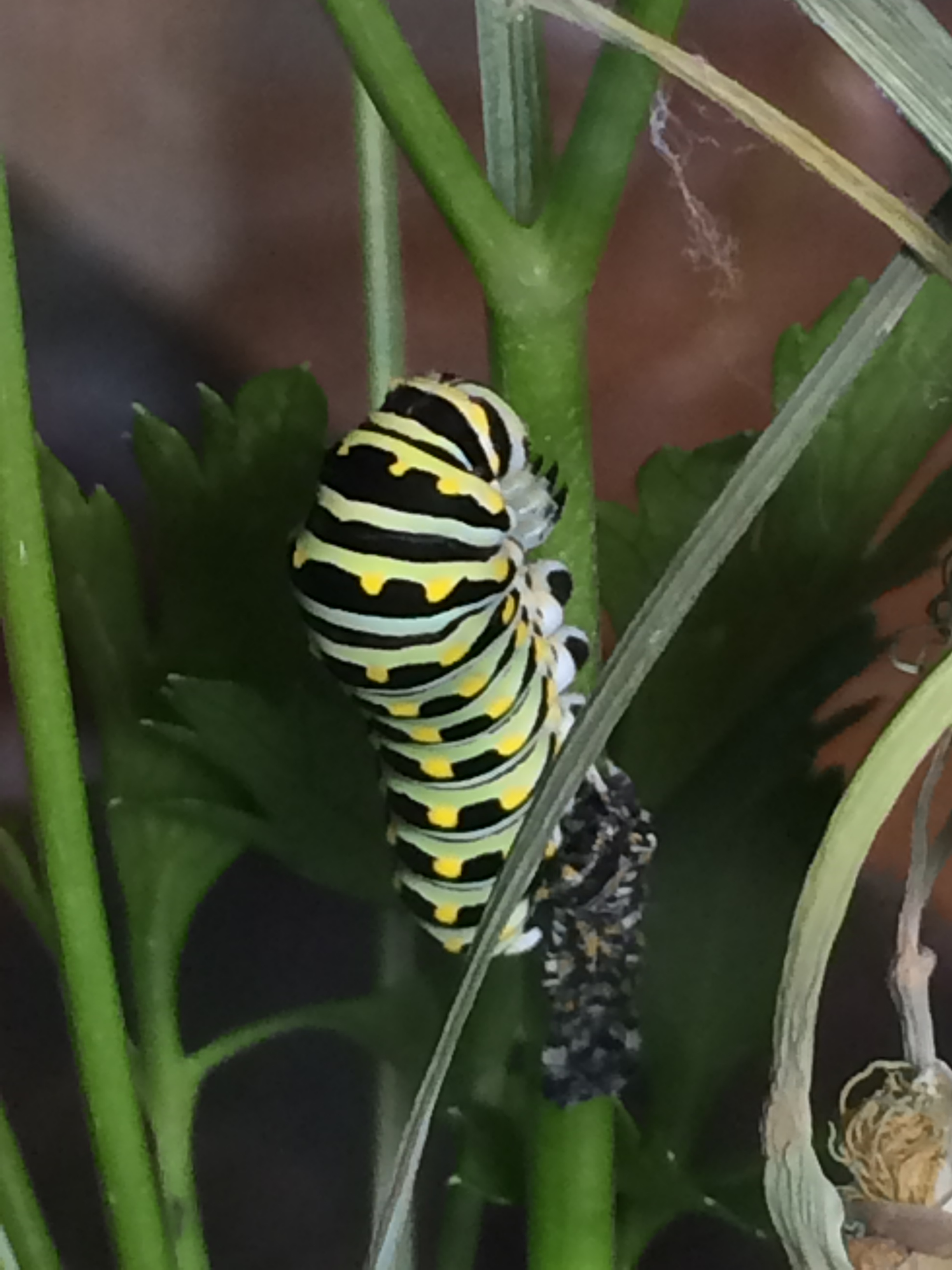
When at their final stage they become very active. I was surprised how fast they can move. They have no trouble moving up and down plants, across the ground, or even up the side of a glass terrarium. Here is one anxiously looking for a place to transform.
They will typically attach themselves tail and head to prepare to transform to a chrysalis. This is usually right-side up but we had one upside down. After about a day like this they make a cool little harness and put themselves in it. Then they shed their skin one last time to reveal the pupae skin underneath. This takes some effort. The next video is edited and at 2X speed because the real-time process took about six minutes.
The outer pupae skin then hardens into a more distinctive shape. The chrysalis are either brown or green. We had two green and four brown. There is debate online whether this is due to environmental conditions, like amount of sunlight, or genetically determined. The two green ones went to the brightest area and were the only two on the glass. The four brown ones were all on the underside of sticks. No matter the cause, the camouflage is effective.
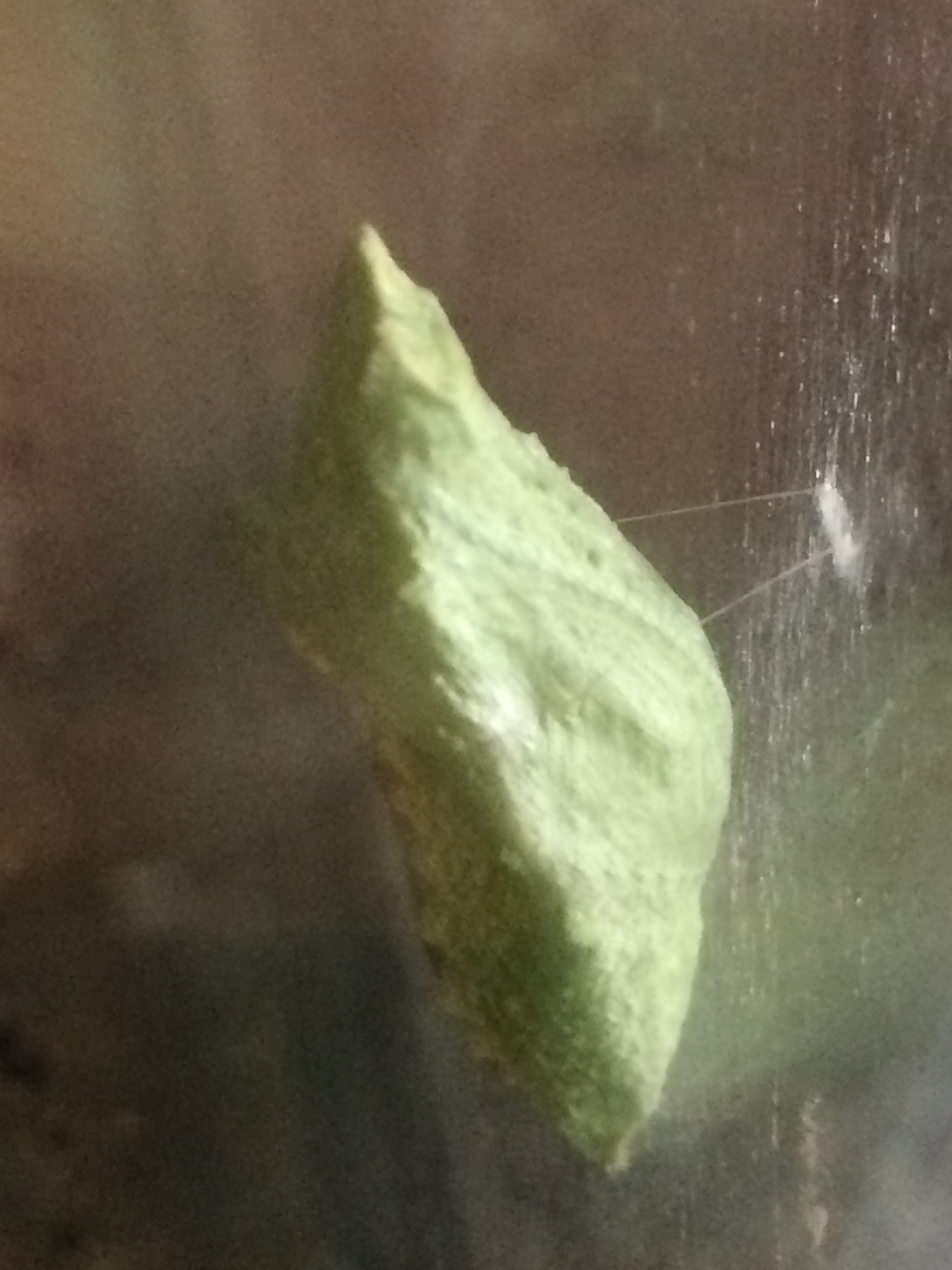
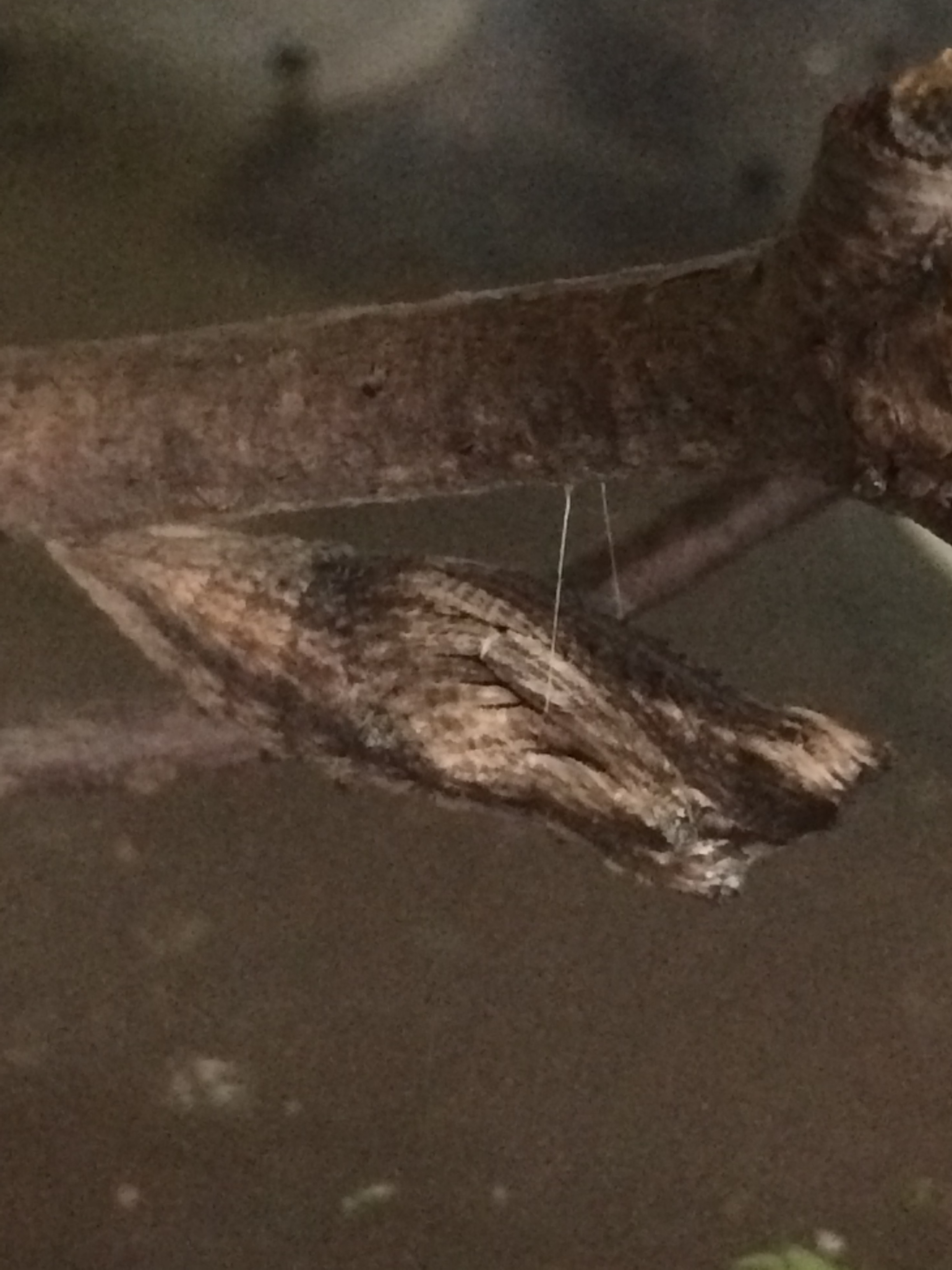
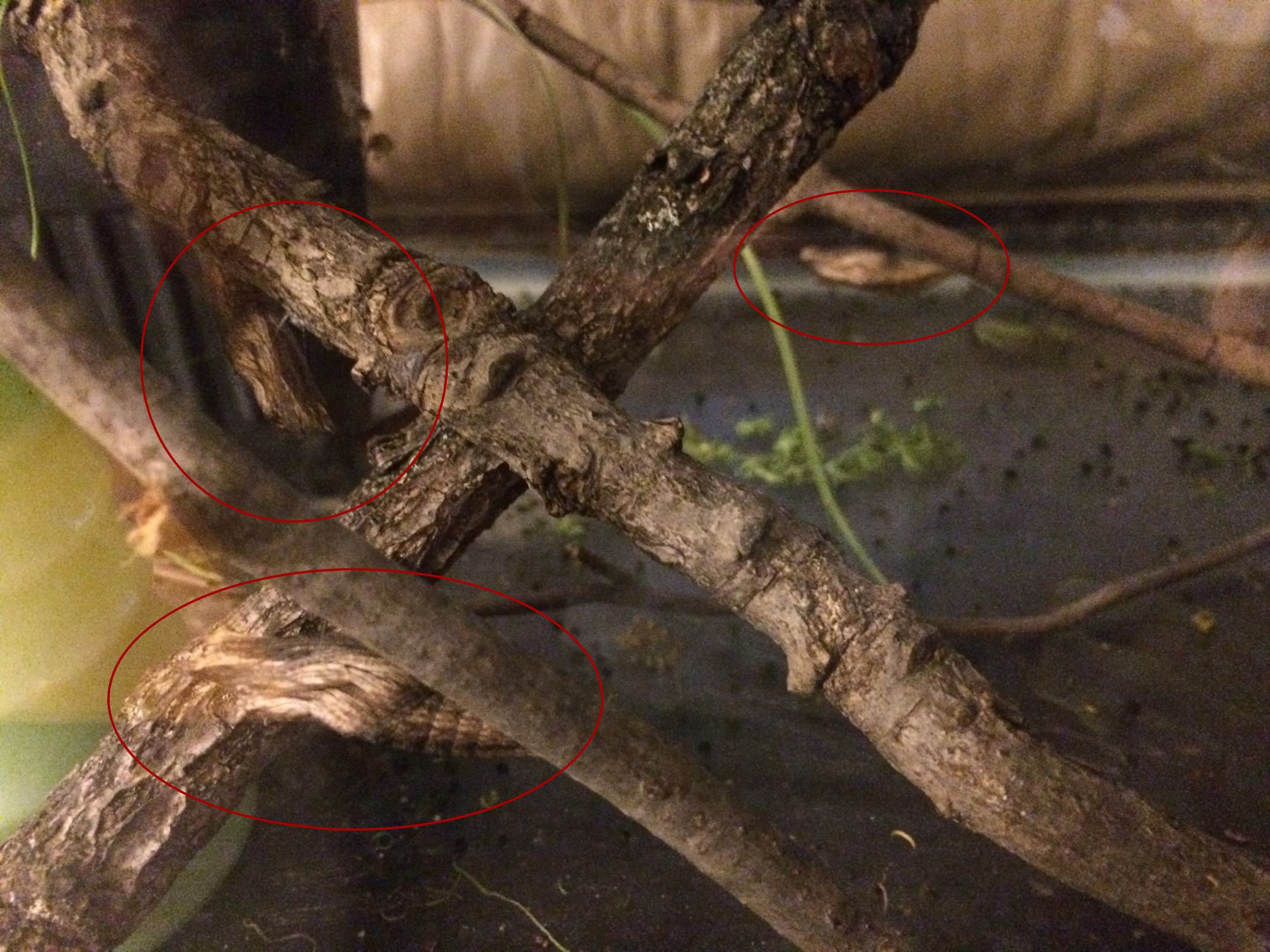
The chrysalis then turns semi-transparent just prior to the butterfly emerging. The first was the green one above. The second is the bottom most brown one of the three in the photo above.
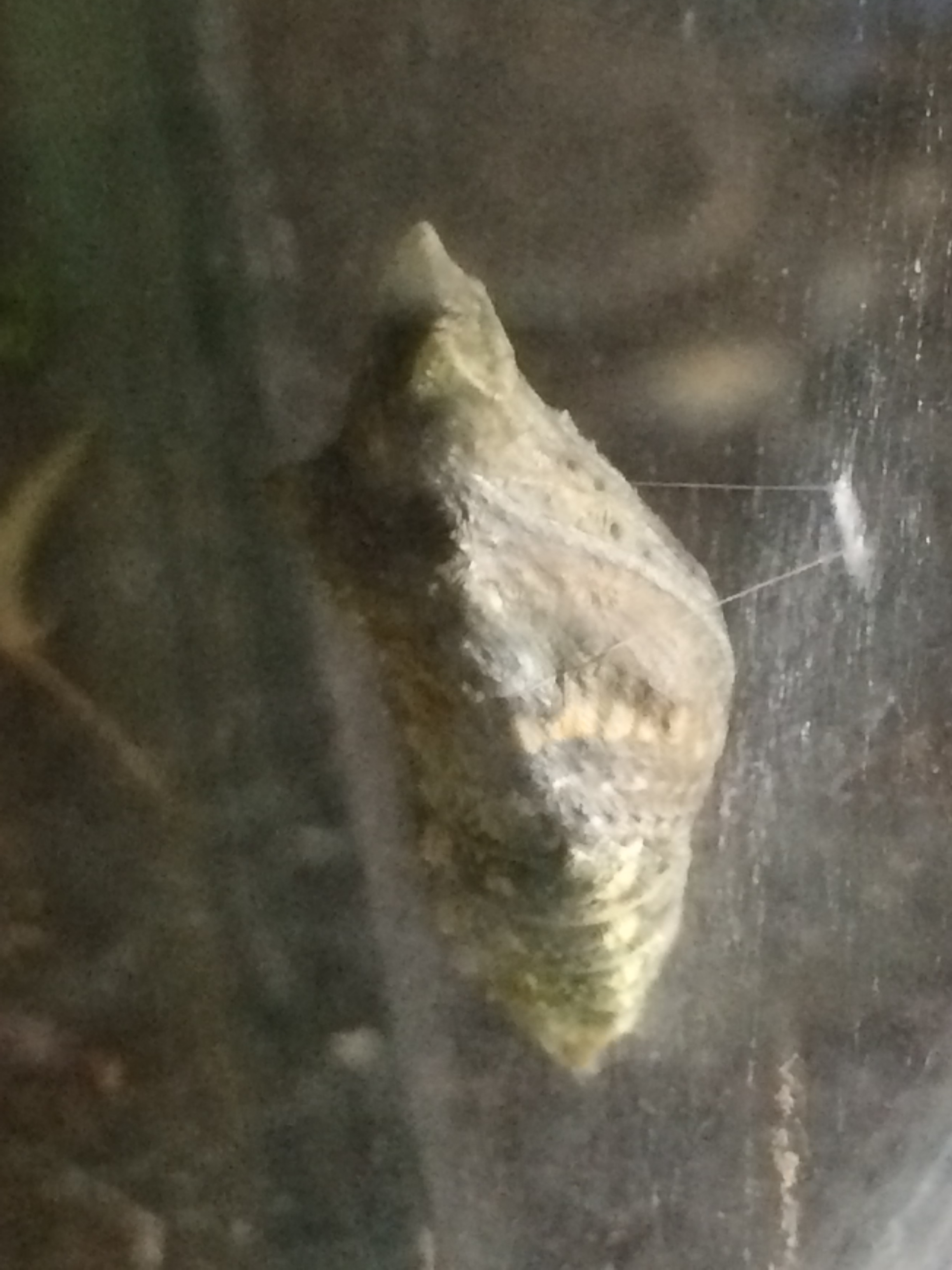
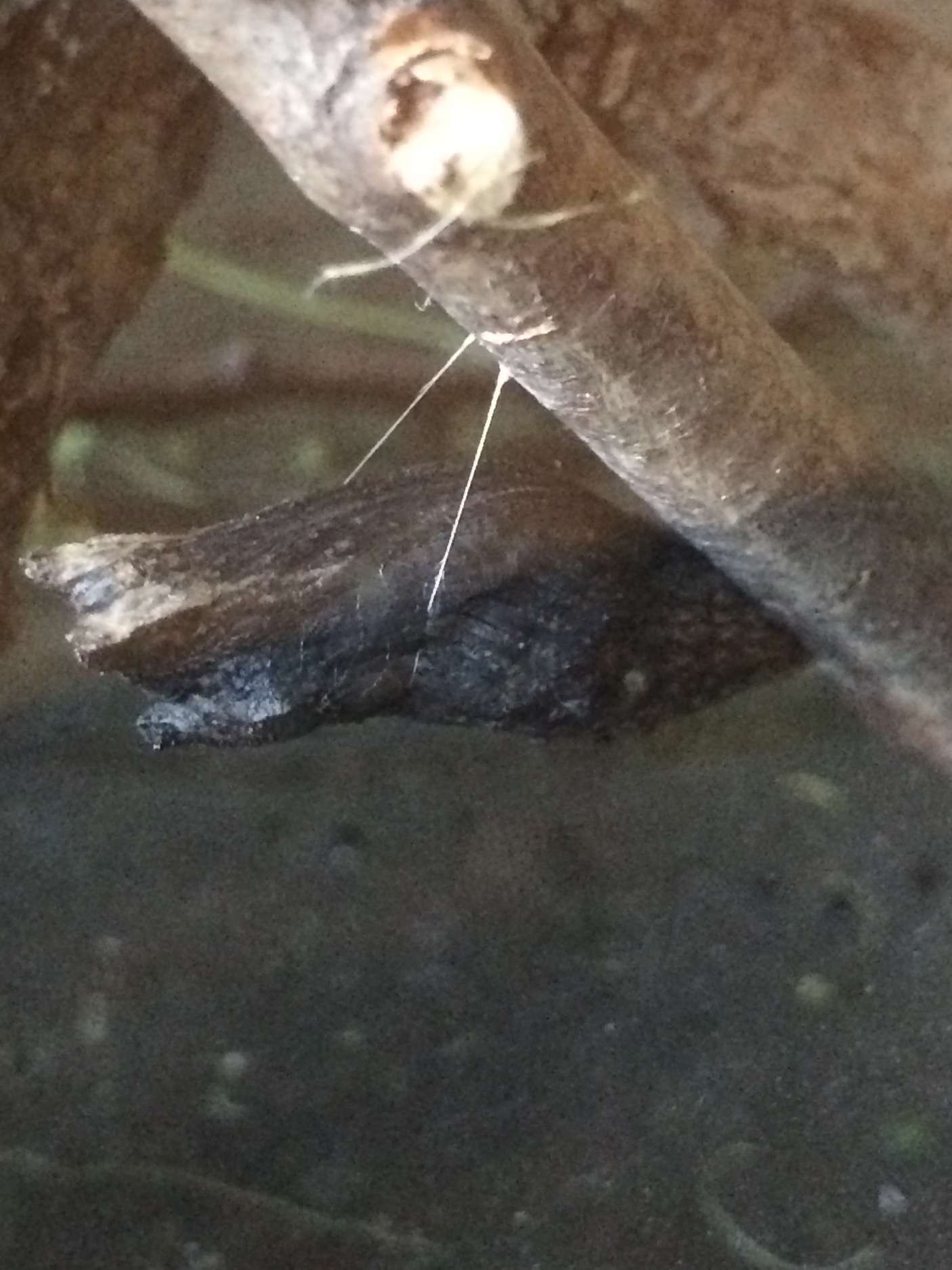
Black swallowtails then emerge as an adult. Here is a male taking time to dry off and stretch his wings. The empty chamber is left.
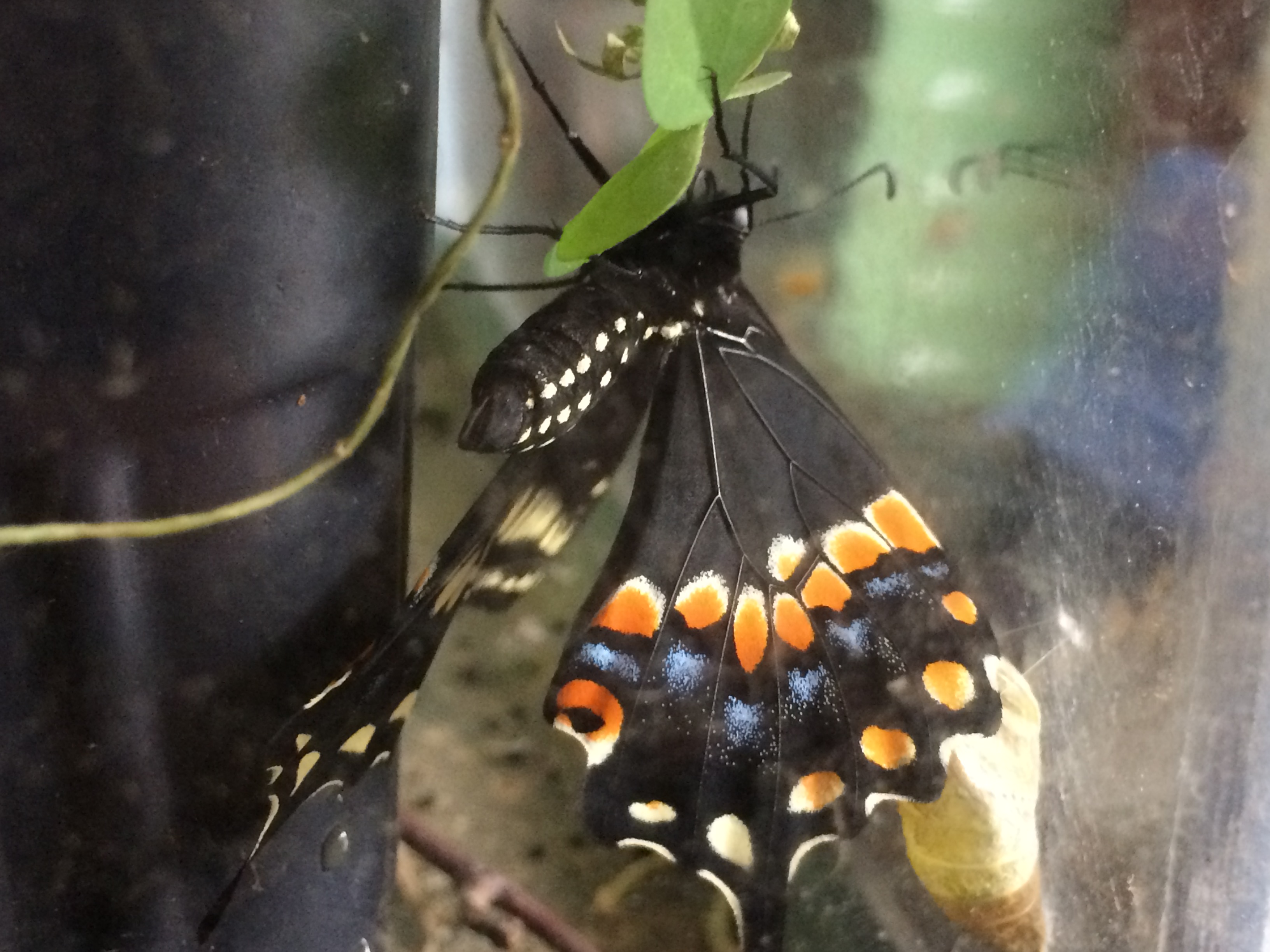
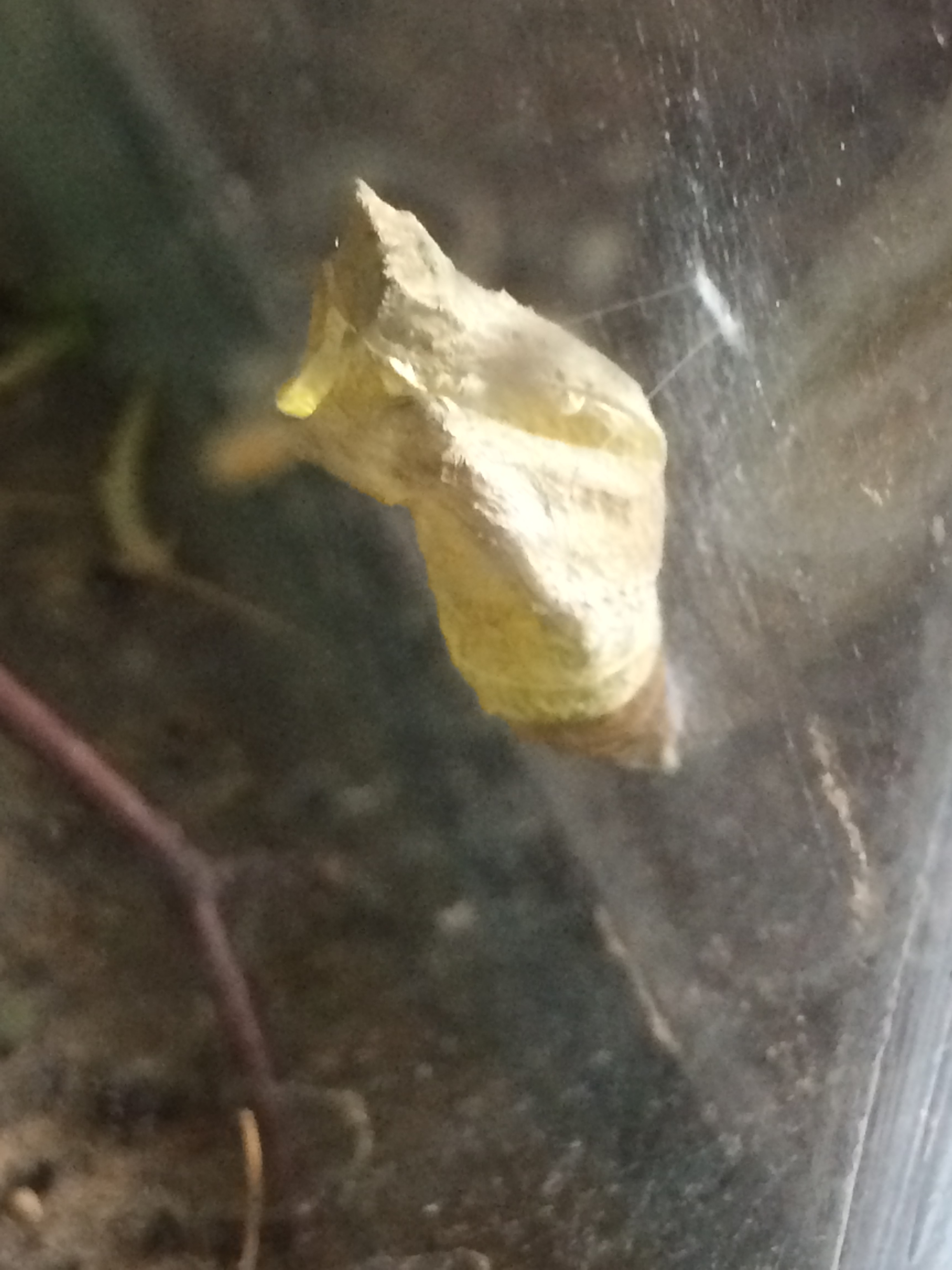
Once they are all rested, which can take hours, they are ready to fly. This guy was trying to climb to higher ground without success. I eventually held a stick down to him. He climbed up and I gently lifted him clear of the box and off he flew.
A few days later I saw a male on our butterfly bush out front feeding. Perhaps our friend came back to say hello.
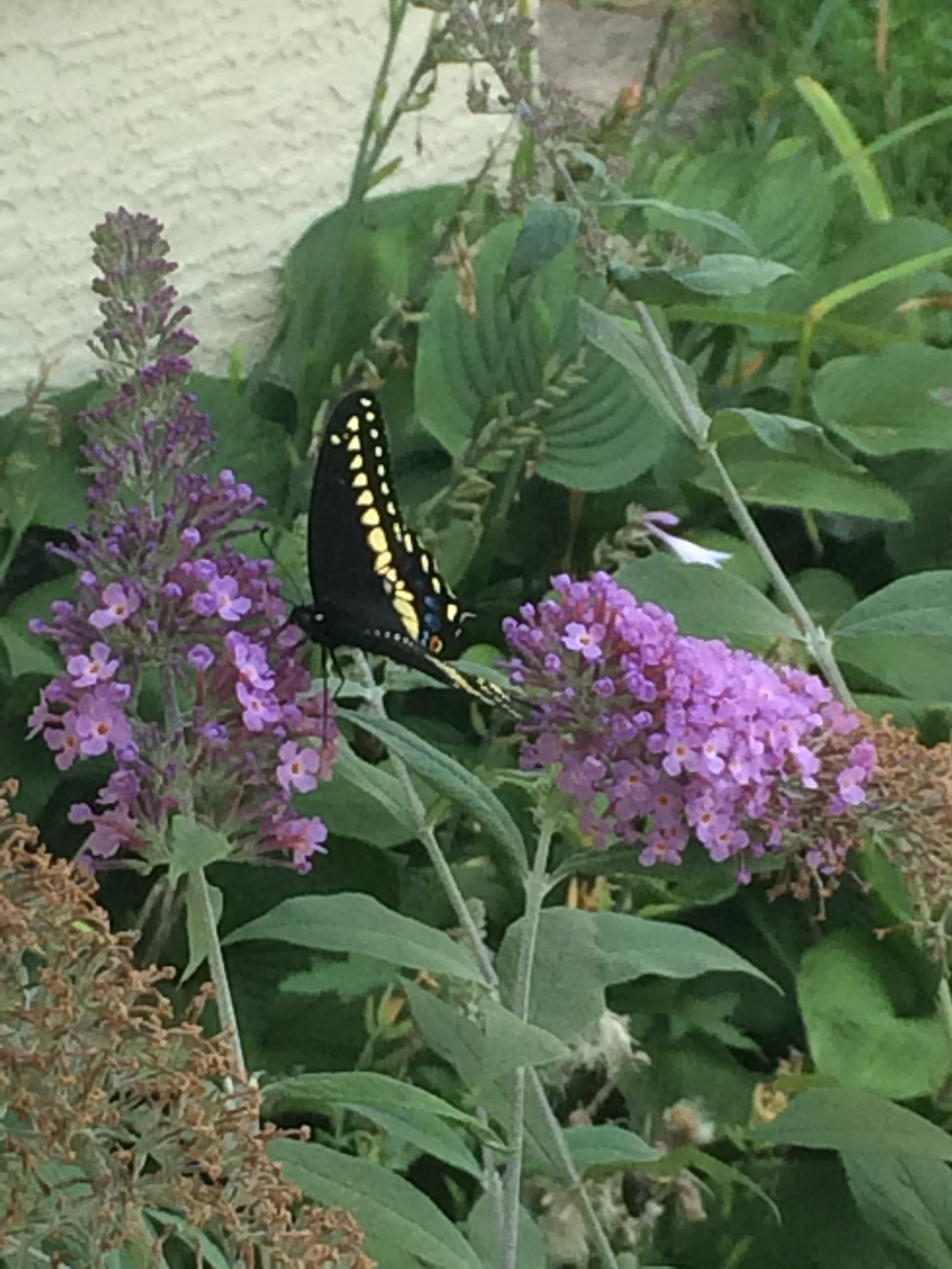
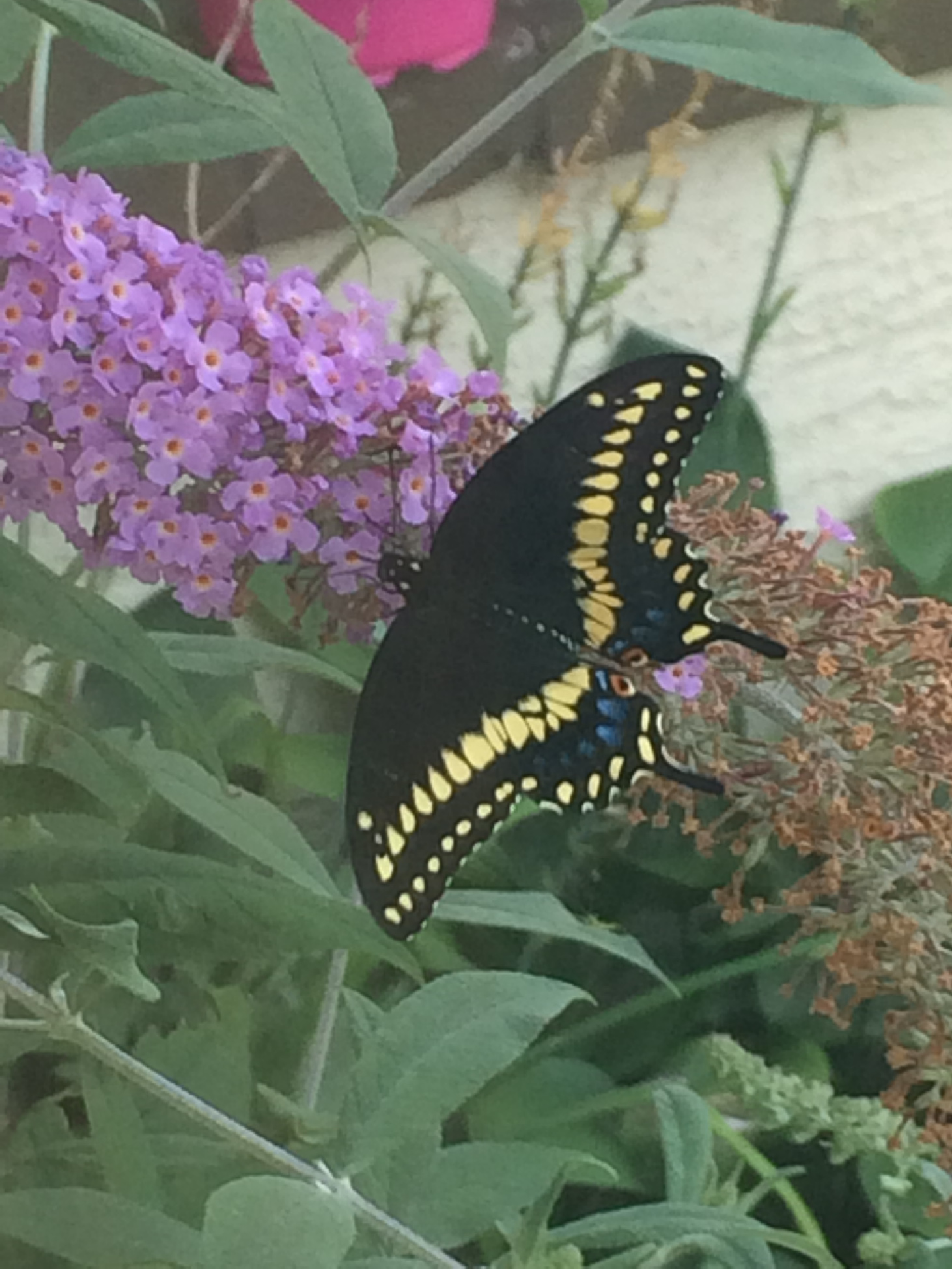
Second to hatch, from a brown chrysalis, was a female. The third was a parasitic wasp! These wasps lay eggs inside caterpillars (which must have happened before we got it as they were raised indoors). The wasps emerge from a distinctive circular hole instead of the top opening up like the butterflies do. I believe it was a trogus pennator wasp. In the final count, three of the six were healthy adults, wasps came out of two, and one pupae perished during transformation. A hard life with only 50% of our brood maturing to adulthood despite spending the last several instars in a protected environment.
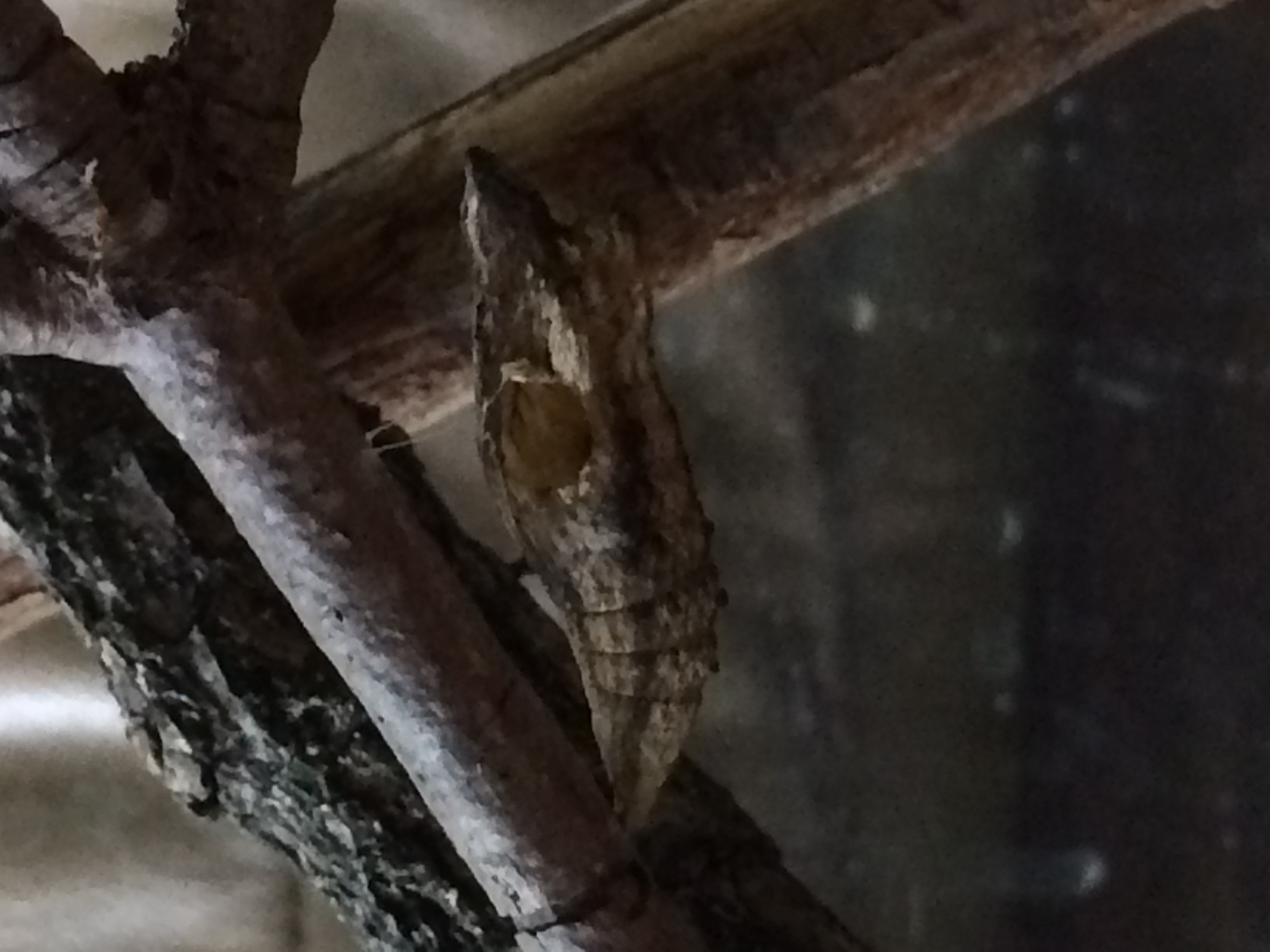
We found more swallowtail caterpillars all over the garden and brought four more in for another round. Black swallowtails go through several generations each year.
"Black swallowtails raising their young." Stewardship Garden. http://www.ourhabitatgarden.org/creatures/butterflies-young-swallowtails.html. Accessed 3 August 2018.
"Eastern Black Swallowtail." Featured Creatures. University of Florida. http://entnemdept.ufl.edu/creatures/bfly/bfly2/eastern_black_swallowtail.htm. Accessed 3 August 2018.
Mahr, Susan. "Black swallowtail, Papilio polyxenes." Master Gardener Program. University of Wisconsin-Extension. 10 July. 2015. https://wimastergardener.org/article/black-swallowtail-papilio-polyxenes/. Accessed 6 August 2018.
"Trogus (wasp)." Wikipedia. https://en.wikipedia.org/wiki/Trogus_(wasp). Accessed 7 August 2018.
Wasson, Richard. "Parasitic wasp - Trogus pennator." BugGuide. 2008. https://bugguide.net/node/view/194547. Accessed 7 August 2018.